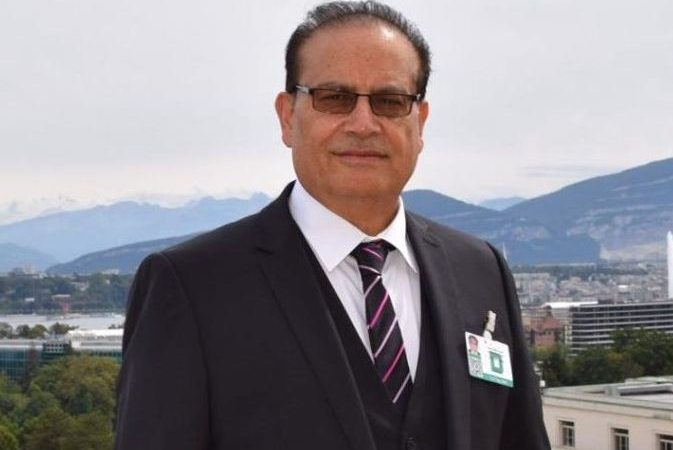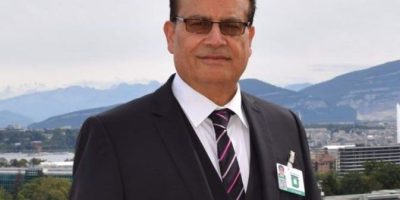Bahawalnagar incident, a PR Success, or…

By: Qamar Bashir
Let’s explore why the Bahawalnagar incident should have been contained within social media. The posts, including footage, views, analysis, and commentary shared by social media activists regarding the incident, were initially perceived with skepticism by viewers due to their informal nature and the general lack of credibility and authenticity associated with social media content. However, when official media managers injected this incident into traditional media, they inadvertently lent credibility and authenticity to these potentially concocted social media posts by associating them with the more trusted and established traditional media channels. This shift in platform allowed misleading or unverified information to gain unwarranted credibility, which could have been avoided by keeping the incident within the sphere of social media.
Furthermore, social media influencers often lack access to traditional media channels, which limits their ability to amplify messages with credibility. Conversely, official media managers possess the capability to inject a counter-narrative by leveraging their access to social media platforms, thereby generating traffic and engagement in a controlled manner. This strategy avoids the unnecessary amplification of virulent propaganda against the country’s two most important and indispensable institutions in traditional media. By focusing on strategic and controlled communication through social media, the impact of misleading narratives could have been effectively managed and mitigated.
With extensive experience supporting ministers and leaders in various capacities—from press attaché in Kuala Lumpur to Press Minister in Paris, and culminating as Press Secretary and media advisor to the President—I had developed a habit to instinctively evaluate public relations campaigns. The Bahawalnagar incident serves as a prime example. Despite an otherwise successful media campaign, a significant flaw was the unwarranted escalation of the incident in traditional media, which initially emerged on social media and should have been contained within that platform.
Furthermore, state institutions possess an overwhelming advantage in having access to actual and factual information compared to the informal and laymen social media posts. This advantage empowers official media managers to effectively counter misinformation or propaganda with accurate data, evidence, and explanations. For instance, in the mentioned incident where social media users were spreading misinformation through fabricated videos or pictures lacking context or evidence, the optimal response would have been to consistently provide factual information with equal frequency and reach. This approach could have swiftly addressed and debunked falsehoods within the same digital space where they originated, without inadvertently legitimizing the misinformation in traditional media channels and amplifying it by exposing the incident to a broader audience that may not have encountered it initially on social media..
The second significant mistake made by the official media managers was their lack of preparedness when using traditional media to counter the false propaganda. Their statement was vague, lacking in facts, figures, and context, and it failed to provide legal backing or support. The official narrative failed to address crucial details about the incident, leaving important questions unanswered. For example, there was no clarification on why a police contingent ambushed the house of a serving army man, what information they had to justify the raid, whether they possessed a search warrant, or if they had obtained the necessary approvals from competent authorities. Additionally, details such as the presence of a female police officer during the raid, any arrests made, or the registration of an FIR against the serving army man or alleged illegal raiding party were conspicuously absent from the official response.
Furthermore, the official response failed to address critical gaps in the narrative, such as the circumstances surrounding the alleged army contingent raiding the police station. Key questions left unanswered included: Who authorized the raid? Who led and executed the raid? What were the mission and objectives of the raid? What legal rules or procedures empowered the army to conduct a raid on a civilian police station? What actions were taken during the raid and what objectives were achieved?. These omissions in the official account contributed to a lack of transparency and raised further doubts and questions among the public.
The official communication also failed to specify the legal basis under which the army and police officers reached a compromise. Critical details were left unanswered, such as who the negotiating officers were, what specific points of agreement were reached, and whether the agreement was documented in writing or solely verbal.
Instead of addressing these vital questions, the official response shifted the burden to an inquiry team composed of officers from both agencies, seemingly aware that the involvement of police and army officials as parties in the incident necessitated an independent third-party investigation. Ideally, the matter should have been adjudicated by a trial court with relevant jurisdiction to ensure impartiality and transparency in resolving the issues raised as per law of the hand.
The official media managers may have overlooked the critical consequence of failing to provide essential information through traditional media channels. Without this information, the public may dismiss the narrative, leading them to seek answers from social media. Unfortunately, social media influencers seeking to boost their ratings and profit may exploit this gap by filling it with persuasive rhetoric and concocted, distorted, or skewed facts and figures to craft compelling but misleading narratives.
As patriotic Pakistanis, it is essential that we all uphold and support our country’s key institutions responsible for external and internal security—the army and police—by fostering public trust and respect towards them. To achieve this, it is imperative that the official media managers of both the army and police collaborate effectively, presenting factual information supported by laws and rules to convey their narrative or counter-narrative. It is crucial that they refrain from sharing incomplete or half-baked narratives on social or traditional media until they are fully prepared with comprehensive and accurate details. Additionally, they should employ public relations tools professionally and effectively to manage and de-escalate any issues, incidents, or developments without resorting to the use of force. By prioritizing transparency, professionalism, and strategic communication, these institutions can enhance public confidence and strengthen their relationship with the people of Pakistan.
By: Qamar Bashir
Former Press Secretary to the President
Former Press Minister to the Embassy of Pakistan to France
Former MD, SRBC
Related News

Will the U.S. Follow the Soviet Union’s Collapse?
By Qamar Bashir The warning comes not from an enemy, but from within the ranksRead More

Taxes on Mobile Devices: It’s FBR, Not PTA
Muhammad Farooq FBR taxes and duties—commonly referred to as PTA taxes on mobile phones—have becomeRead More


Comments are Closed